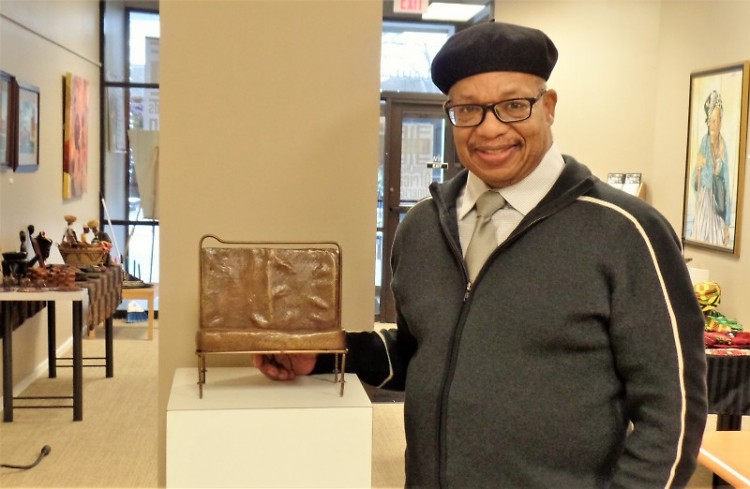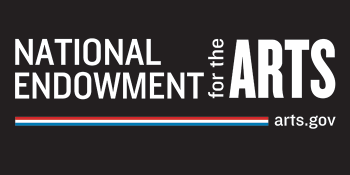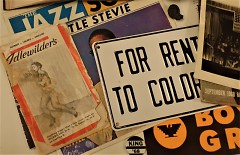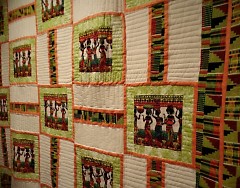Until now, there have been few places to learn about the very first African-Americans to live in Grand Rapids.
The Dutch heritage of early West Michigan settlers is often a driving narrative of Grand Rapids history, as well as that of Polish and other European groups. The Anishinaabe indigenous peoples they displaced have also chronicled their history in museums and place names like Ottawa Avenue.
But few know that William J. Hardy, a former slave freed in the 1840s, came to own hundreds of acres south of Grand Rapids, and was eventually elected to the role of Gaines Township supervisor in 1872.
At the Grand Rapids African-American Museum and Archives (GRAAMA), visitors can soon learn more about Hardy and others in the African-American community who helped build the city into what it is today.
First day of Kwanzaa
The museum, located at 87 Monroe Center, will host its Royal Opening on December 26 from 10 a.m. to 5 p.m. The event will feature African drumming, dancing and music, said director George Bayard III. Visitors can enjoy refreshments as well as take in art by local artists and exhibits of local historical objects and photographs. There will be a ribbon-cutting with city officials at 3 p.m..
Bayard also invited everyone to the Kwanzaa ceremony from 6 to 8 p.m. on December 26. Kwanzaa is a celebration of family, community, and culture: the name is taken from the Swahili phrase for “first fruits” or offering. The first day of Kwanzaa celebrates the principle of Umoja, meaning unity. The ceremony will feature the lighting of the first Kwanzaa candle, passing the cup of unity, and conversation to honor the ancestors, including William J. Hardy. Fruits and earth-grown foods, the traditional foods of Kwanzaa, will be among the refreshments. “If people haven’t been to a Kwanzaa celebration before, they are welcome. It’s a good opportunity to listen and learn,” Bayard said.
“Kwanzaa is a seven-day holiday. It’s not meant to replace Christmas. It starts after Christmas and goes to the New Year so that we in our families and communities have a chance to reflect on the principles of unity, cooperative economics, creativity, and so on. Then people can build their New Year on these principles.”
GRAAMA will also host ceremonies for the second and third days of the celebration: Kujichagulia (self-determination) and Ujima (collective work and responsibility).
Highlighting similarities
In comments on a recent article about the museum, some seemed to think that the museum will exacerbate current racial tensions by focusing on differences. Bayard responds, “We’re actually highlighting the similarities because we’re telling individual stories. The basis of our museum will be oral histories: one person telling one story. The stories of people who migrated from Mississippi to Grand Rapids in the 1930s are not that dissimilar from those of people who came from Germany or Poland.”
In addition, Bayard says, “One misconception is that only African-Americans will be in the museum. That couldn’t be further from the truth, because we can’t tell our story without telling the whole story of America, which comes through Whites, Latinos, Jews, African-Americans and Native Americans. There’s always going to be a criss-crossing of cultures.”
“When you go into education, or history, or academia, a lot of the stories of African-Americans who made differences in America are left out or altered or misinterpreted. We want to tell the story as accurately as possible and add those figures in- it could be a Native American or a Latino who had influence in our community, and people need to know. It’s our job to tell the story in a more complete way, to tell the local side of every story, and to dig a layer deeper.”
In a Grand Rapids Times article last year, Bayard has said that the acronym GRAAMA is intentional. “Grandma is the person who holds the history of the family and takes on the responsibility of passing that history on to the next generation.”
Oral histories
The GRAAMA will rotate exhibits from objects that Bayard has collected and stored over the years. “In January we will have an exhibit related to Dr. King, stressing the local ties.”
Bayard says throughout Black History month, GRAAMA will be offering local insight and history.
“We’ll also be commemorating the unrest that took place in Grand Rapids 50 years ago in July 1967 with an exhibit we’re calling ‘Riots, Race, and Reconciliation.’ We’ll view a mini-documentary and have a panel discussion about then and now. The ‘Reconciliation’ part of it will be about what good things came out of the unrest.”
People will hear from different sides of the unrest, including from law enforcement and city commissioners from the time, so they can “get to the root of the facts,” Bayard said. “Remember that at the time, people got their news from WOOD TV and the Grand Rapids Press. That interpretation remained as fact. But if you go into the neighborhoods, you get the same story from people who would have seen it differently,” based on their lives and experience.
Bayard shared another story that arose as researchers recorded oral histories from local community members. “A couple months ago, we were interviewing a local quilter. When she finished, the next lady sat down next to her. They started talking about having to sit in the balcony at the local theater - the ‘colored’ balcony.”
“One remembered when the news reels would play and they found out the U.S. had bombed Japan with the atom bomb … it was made in a little town in Tennessee. The other lady started and said, ‘That’s where I worked! They always told us we couldn’t tell our family about it.’ She said she never knew she was making the atom bomb.”
“This is somebody you might see at Meijer or walking down the street -- you would never know she was at the same plant that made the atom bomb. So these are the kind of stories that we get.”
How to participate
“People are always asking how they can help,” Bayard said. “One of the first ways is to go to our website and donate, or at our Facebook, which helps with our overhead and programming.” GRAAMA is a 501(c)(3) organization, so all donations of money, furniture, supplies, and artifacts are tax-deductible.
“A guy just called us today -- he found a paper dated the day that Dr. King died. It was a letter to the County Correctional Facility about how to deal with inmates who might be unruly after Dr. King’s death.’”
GRAAMA also needs volunteers. “If you want to learn the workings of a museum or work for a couple of hours … we’ll work with anybody who wants to help. We work with the students at the museum school and at WMCAT. We want people to know that while we are an African-American museum, we’re connecting with the whole community.”
The Rapidian, a program of the 501(c)3 nonprofit Community Media Center, relies on the community’s support to help cover the cost of training reporters and publishing content.
We need your help.
If each of our readers and content creators who values this community platform help support its creation and maintenance, The Rapidian can continue to educate and facilitate a conversation around issues for years to come.
Please support The Rapidian and make a contribution today.



